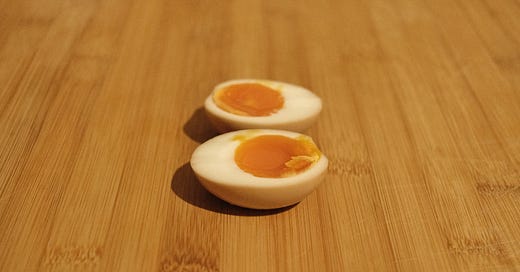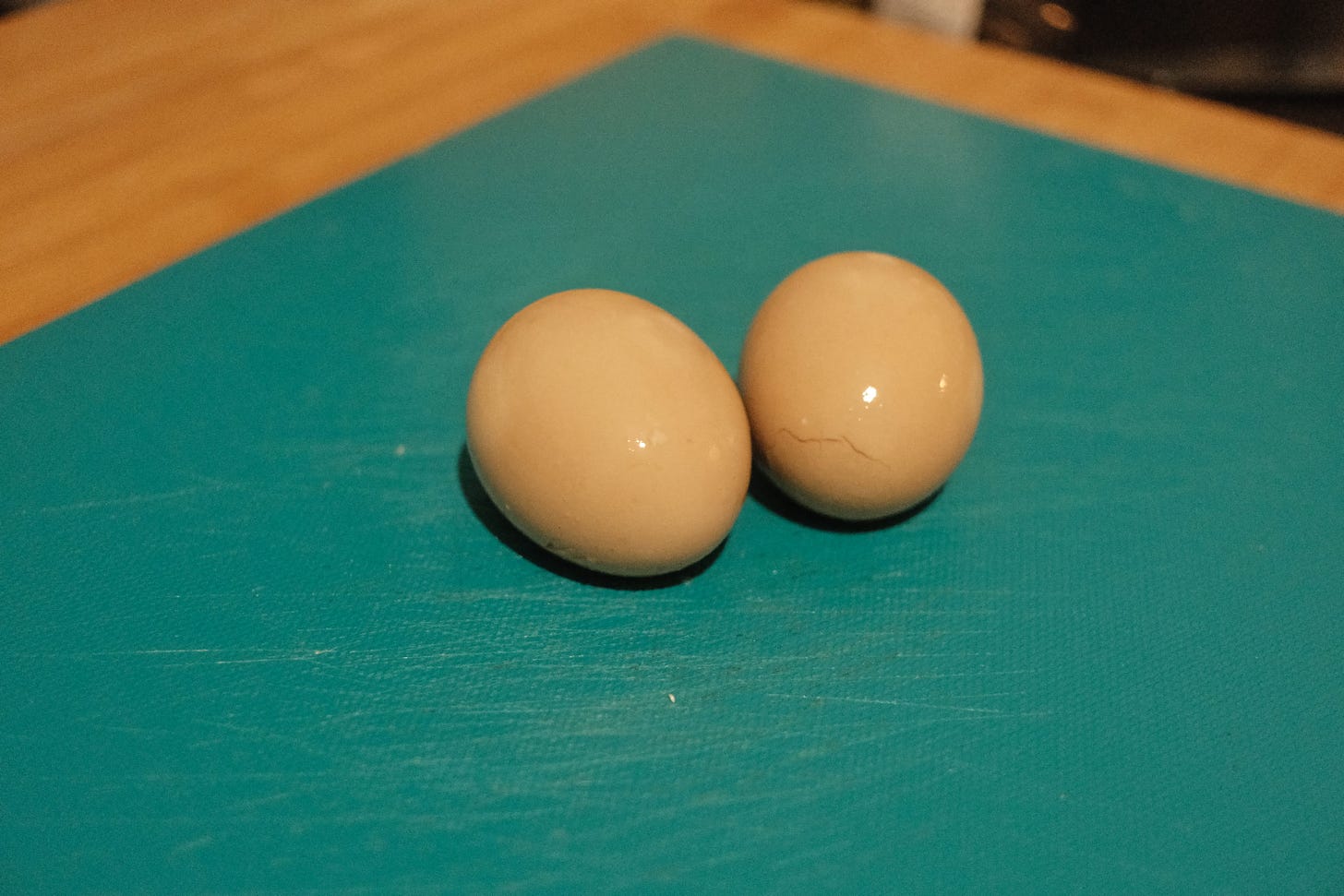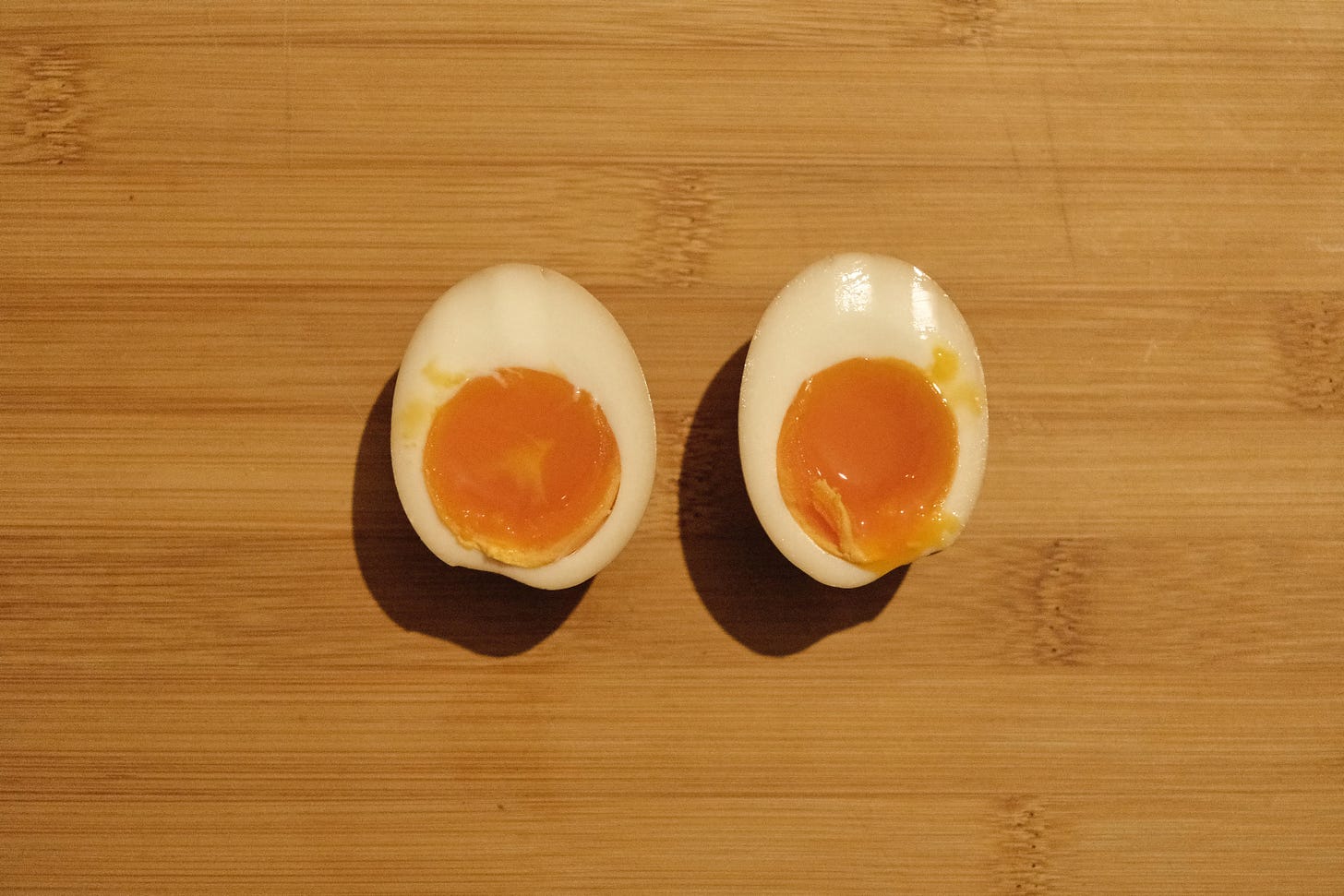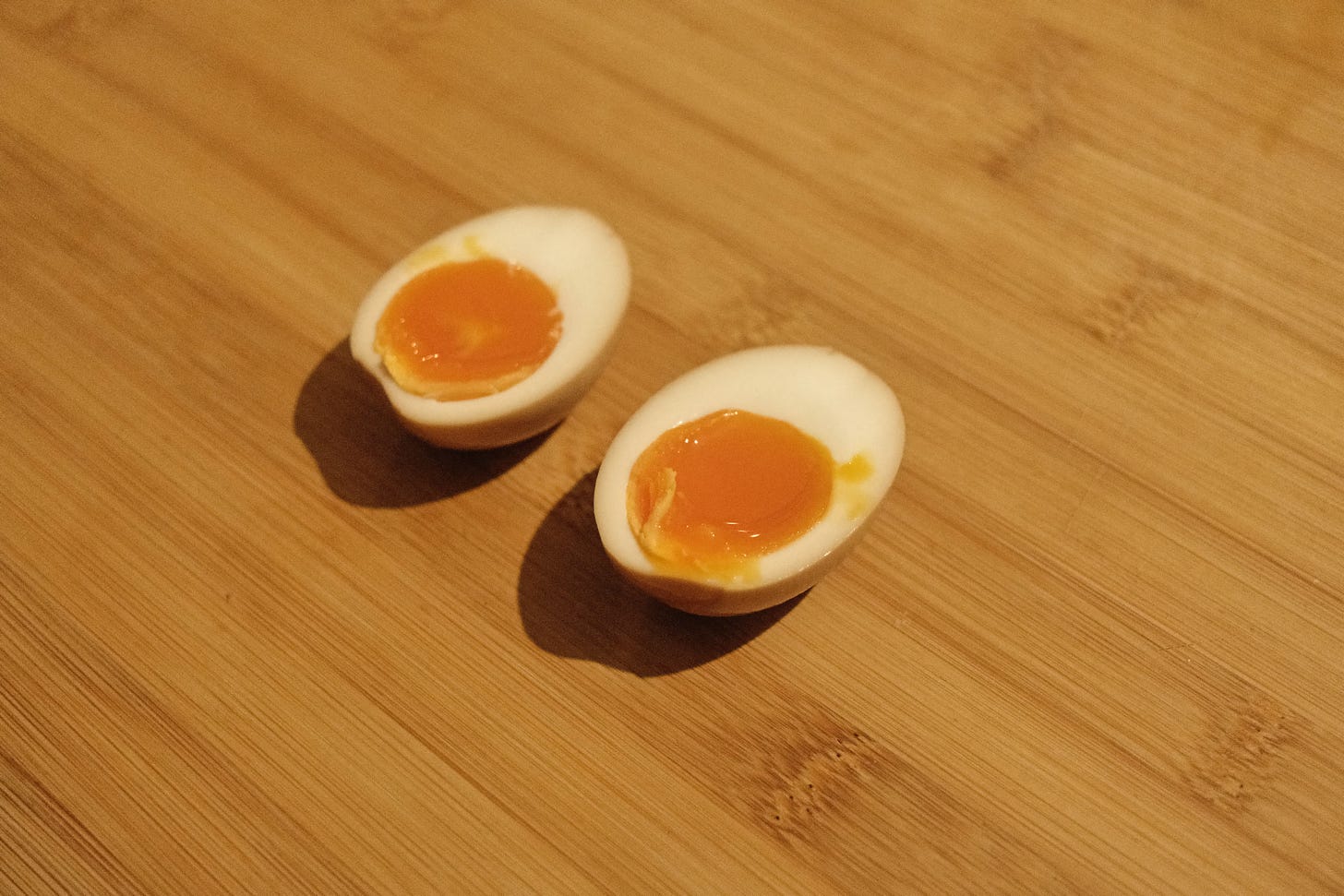My go-to Ajitama Recipe
There is no surprise if Ajitama is the best-loving Ramen topping for many. In this post, we go over my simple recipe and a few tricks for making best-class Ajitama at home.
If you’re not yet a subscriber and like The Ramen Bowl, leave your email to start receiving all the new posts directly in your inbox! 👇
Introduction
Eggs are many people’s favorite part of Ramen, and that makes sense, cause Ajitama really is delicious.
If you never tried it, we are talking about soy-marinated soft eggs. They typically get a moderately salty but sweet flavor, thanks to the mirin content. Also, the marinade not only infuses flavor but slightly cures the yolk, too, resulting in a sort of jelly yet firm, kind of custardy texture.
In today's post, we are infusing spices into the brine to make an even more delicious topping.
Recipe
Ingredients
For cooking the eggs:
Chicken eggs
Water
Ice
For making the brine:
An airtight container to soak and store the eggs in
100 mL soy sauce
100 mL mirin
100 mL water
Aromatics:
1 star anise
1 clove
1 tiny piece of Chinese cinnamon
Preparation
I assume some readers might not be convinced Ajitama veterans, so here I am reporting a way to cook the eggs. If you already feel confident about preparing the eggs, feel free to skip to the next Brine section.
Eggs
Bring a large pot of water to a full boil.
Fill a container with ice and cold water to make an ice bath. Reserve.
Carefully add the eggs to the boiling water.
Using cold eggs from the refrigerator will help keep a smooth and soft yolk since the heat will transfer slower.
Depending on the size of your pot, try to work in small batches of eggs to avoid dropping the water temperature.
Stir for a few seconds and let the eggs boil for 6-7 minutes. Not less, not more. Here even just one minute changes a lot:
Around 6 minutes you will get a liquid yolk.
Around 7 minutes you will get a firmer custardy yolk.
Less than 6 minutes and you have an undercooked egg. More than 7 minutes and you will start to get a cooked yolk. Try to be as quick and precise as you can here.
After the time is up, quickly remove the eggs from the boiling water and move them into the ice bath from step 2. Wait around 15 minutes until totally chilled.
This step is not optional. The temperature-shocking process prevents the egg to keep cooking more than necessary. The external part of the egg is much hotter than the internal one, and skipping this point will let the heat transfer enough for the yolk to change texture, making Ajitama inconsistent.
Peel, then proceed with the brine.
Brine
For the sake of simplicity, I will start exposing this recipe using a simple-brine method. If, like me, you are an “Equilibrium Brine” fan, you will find additional details at the end of the preparation section.
Peel the eggs and add them to the marinade container.
Add the liquids. Equal parts of water, soy sauce, and mirin. You might not need the whole 100 mL each that I pointed out in the ingredients list or you might need more. Just adjust the quantity, making sure to have equal parts.
Add the aromatics.
Let soak in the fridge for 4-6 hours.
Remove from the brine and reserve in the fridge until needed.
As anticipated, I am a fan of the Equilibrium Brine method (more on that by the admiring Ramen_Lord). The purpose of this technique is to allow not to worry about when to take the eggs out of the brine, creating an equilibrium for which the eggs will never oversaturate with the seasoning. Here is a simple reference on how to achieve the same result in this way:
In the marinade container, add the peeled eggs and enough water to cover them completely. Record the total weight of the eggs and water.
Add 10% of the registered weight in soy sauce and 8% in mirin.
Add the aromatics.
Let soak in the fridge for at least 24 hours, and reserve in the liquid until needed, up to 4 days.
Serving Ajitama
The eggs will be cold since they are stored in the fridge, so not to decrease the temperature of your bowl, first take them out an hour or so before serving, enough to get the Ajitama to room temperature.
Cutting. I would argue the best way to slice Ajitama (or eggs, in general) is using a cheese cutter or any food-safe wire, ensuring minimum contact with the egg yolk so that it does not spread or crumble around. However, slicing with a thin and sharp knife is perfectly fine. Usually, Ajitama is sliced in half, but you do not even have to cut it. Serving a whole egg is acceptable. As well as one, two, or more slices. There's no rule!
Flavorful Ajitama could be served as a topping for ramen or broth-less noodles, and could even be eaten alone.
Notes & Storage
Depending on the quality and freshness of the eggs, Ajitama can last in the refrigerator for up to 7 days in a sealable container, though you get the best result in the first 3 to 4 days.
Some argue that a sprinkle of vinegar in boiling water helps with the shell peeling, but even though there is indeed some science behind the interaction of the eggshell and vinegar, I felt little to no difference when it comes to just a six to seven minutes boil.
Instead, a useful trick to get eggs that are easier to peel is using an egg piercer like this one (or a thumbtack or the heel of a knife) to poke a little hole in the bottom of the wider side of the egg before cooking. It is optional, but if you’re having trouble with eggs cracking, or having eggs that are hard to peel, this step can help.
Making Ajitama takes some initial effort and a few attempts while grasping precision, understanding how many seconds past 6 minutes you like your eggs cooked, and weighing the brine. However, once you have prepared it a few times, you will discover how low-effort and high-reward it becomes.
If you tried Ajitama already, let me know in the comments if you like this recipe. And if it is your first time making it, share your results!
— The Ramen Bowl - ◡ -
If you’re not yet a subscriber and like The Ramen Bowl, leave your email to start receiving all the new posts directly in your inbox! 👇








I'm slightly tickled that the eggs called for actually specify "chicken eggs". When I google for recipes, they usually just say "eggs". But yes, this totally makes sense because I eat so many types of eggs like quail, ostrich, roe of different kind. Also! Looking forward to making my very own Ajitama after I move to a new place with a dedicated solo kitchen to experiment in a few months :') Saving this recipe~~